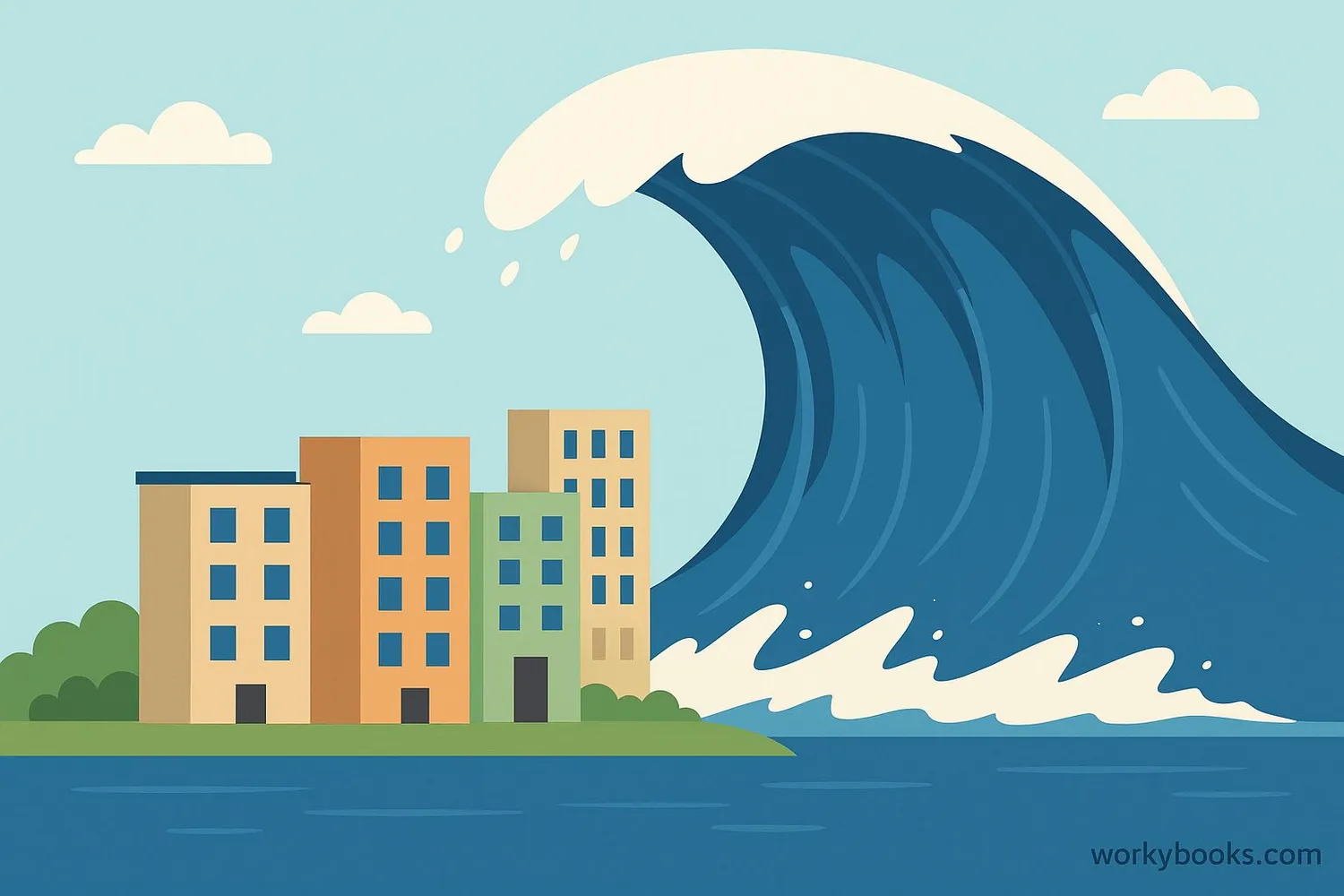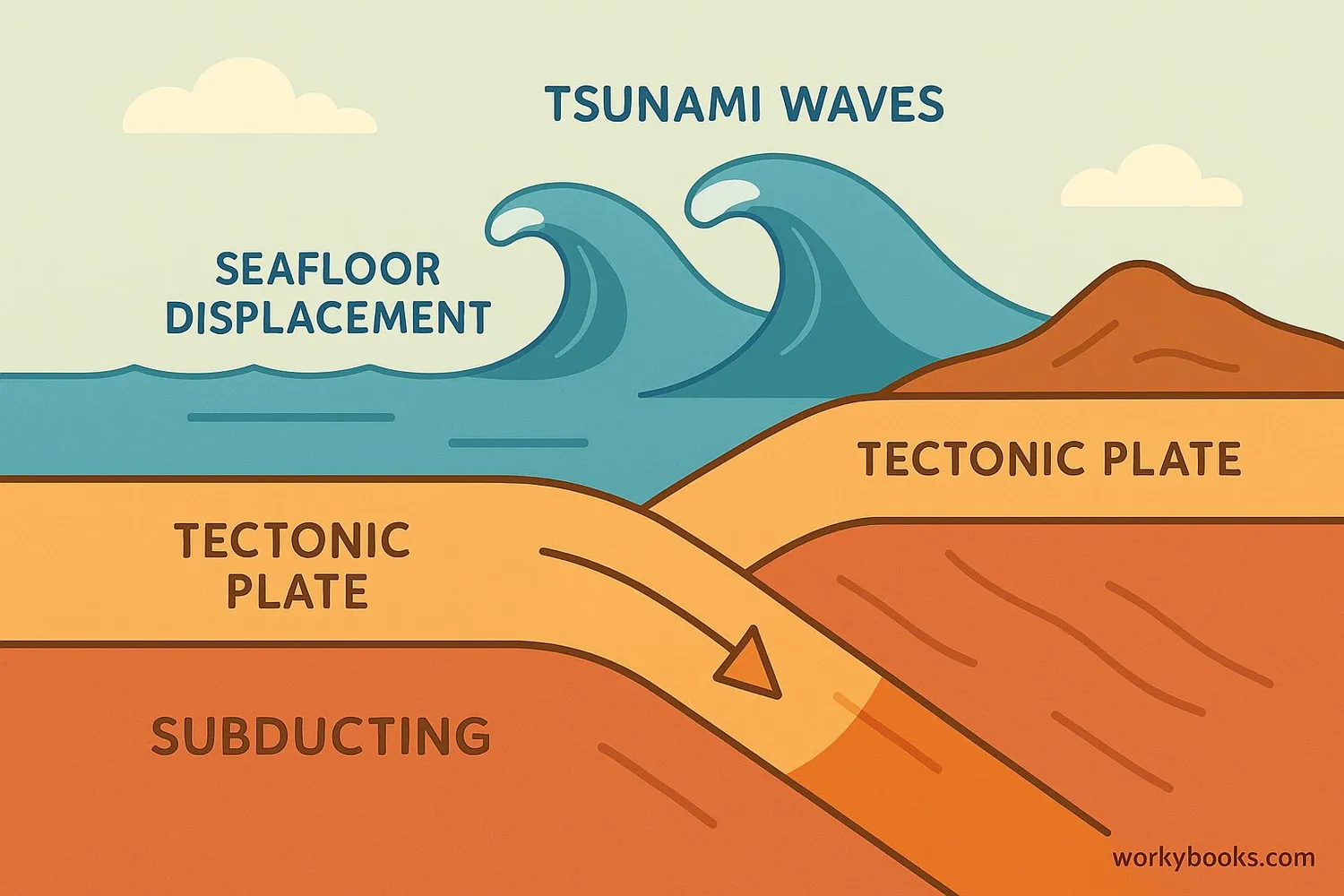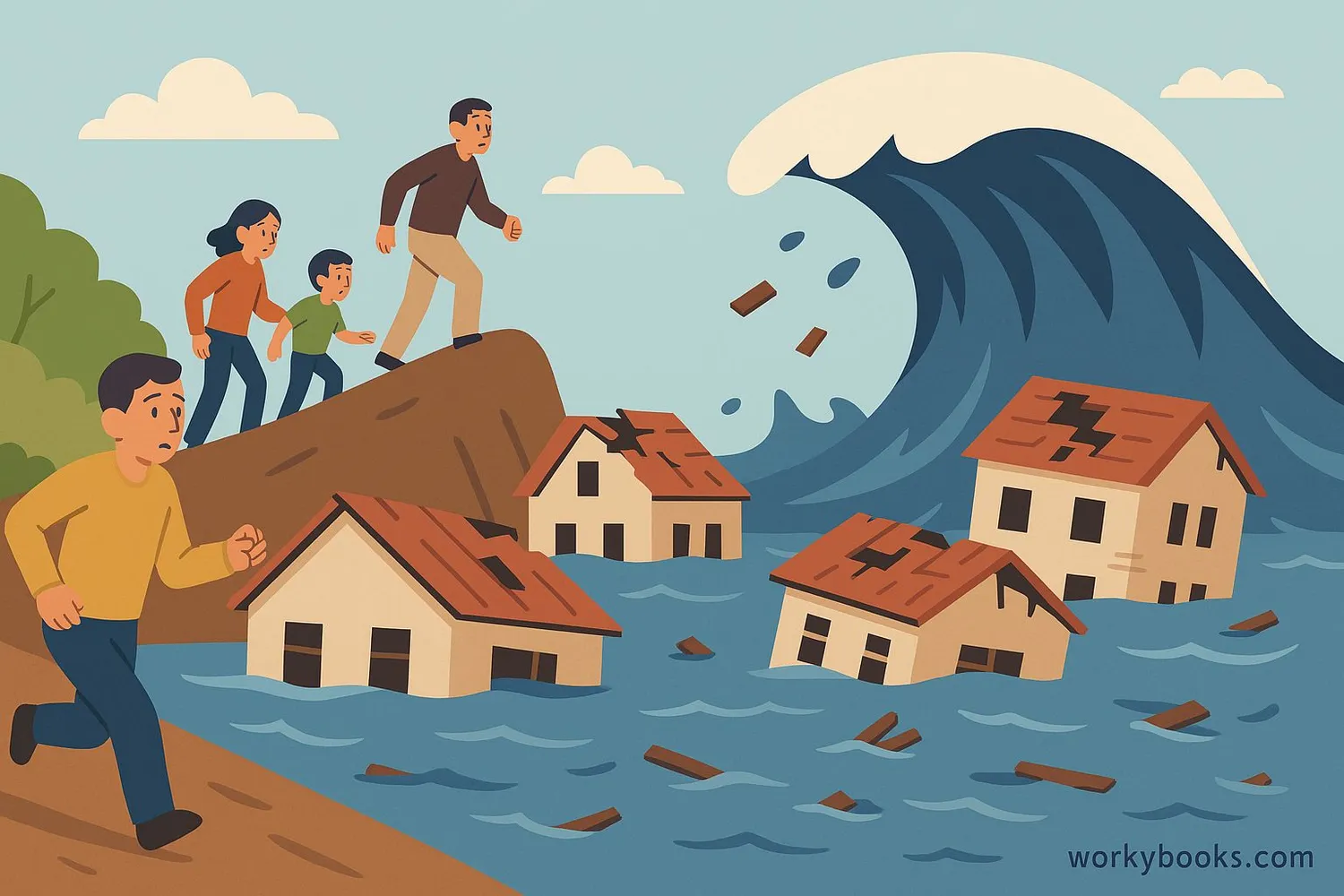Tsunami - Definition, Examples, Quiz, FAQ, Trivia
Learn how powerful ocean waves form and impact coastal areas
What is a Tsunami?

A tsunami is a series of enormous ocean waves caused by large disturbances under the water. The word "tsunami" comes from Japanese words meaning "harbor wave". Unlike normal waves that are created by wind, tsunamis are caused by events like:
• Earthquakes under the ocean floor
• Volcanic eruptions in or near the ocean
• Large landslides into the ocean
• Rarely, by meteorite impacts in the ocean
Tsunami waves travel incredibly fast—as fast as a jet airplane! In the deep ocean, they may be only 1-3 feet high but hundreds of miles long. As they approach shallow coastal waters, they slow down and grow dramatically in height.
Wave Facts!
Tsunamis are sometimes incorrectly called "tidal waves", but they have nothing to do with tides!
How Tsunamis Form

Most tsunamis begin with a powerful earthquake under the ocean floor. Here's how it works:
Seafloor Movement
Tectonic plates shift suddenly during an earthquake
Water Displacement
The movement pushes a huge volume of water upward
Wave Propagation
Energy radiates outward in all directions
Wave Amplification
Waves slow and grow taller near shore
Coastal Impact
Massive waves crash onto coastal areas
Tsunami waves are different from normal waves:
• Wavelength: Tsunamis have wavelengths of 60-300 miles (normal waves: 300-600 feet)
• Speed: They travel 500-600 mph in deep ocean (jet speed!)
• Wave height: Grow from 1-3 feet to 30-100 feet at shore
• Multiple waves: Come in a series, not just one big wave
Wave Warning!
The first wave is often NOT the largest. Tsunamis come in a series of waves that can last for hours.
Effects of Tsunamis

Tsunamis can cause devastating damage to coastal areas. The effects include:
Destruction
Buildings, bridges, and roads are destroyed by the force of water
Environmental Damage
Coastal ecosystems like coral reefs and forests are damaged
Flooding
Massive flooding contaminates fresh water and farmland
The most dangerous aspects of tsunamis are:
• Flooding: Water can travel miles inland
• Strong currents: Can sweep away people and vehicles
• Debris: Floating objects become dangerous projectiles
• Multiple waves: The first wave may not be the largest
• Coastal erosion: Shorelines can be permanently changed
Safety First!
If you feel a strong earthquake near the coast or see the ocean suddenly pull back, move immediately to high ground!
Tsunami Quiz
Test your tsunami knowledge with this quiz! Answer all 5 questions to see how much you've learned.
Frequently Asked Questions
Here are answers to some common questions about tsunamis:
Tsunami Trivia
Discover some fascinating facts about tsunamis!
Ancient Event
The oldest recorded tsunami happened in 479 BC in Greece, documented by the historian Herodotus. It destroyed Persian troops attacking the town of Potidaea.
Global Reach
The 2004 Indian Ocean tsunami traveled over 3,000 miles to Africa! Its waves were still 9 feet high when they reached Somalia, 3,000 miles from the earthquake epicenter.
Space Tsunamis
Scientists have found evidence of massive tsunamis on Mars! These were likely caused by meteor impacts into ancient oceans that existed on the Red Planet billions of years ago.
Nature's Protection
Coastal mangrove forests can reduce tsunami wave heights by up to 90%! These natural barriers absorb wave energy and protect inland areas from damage.


